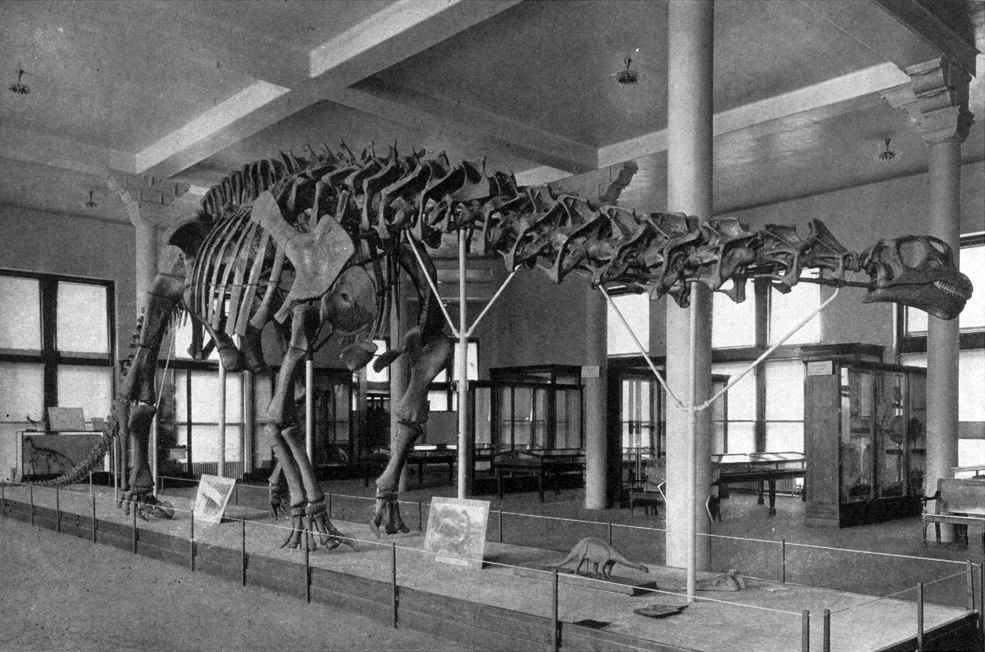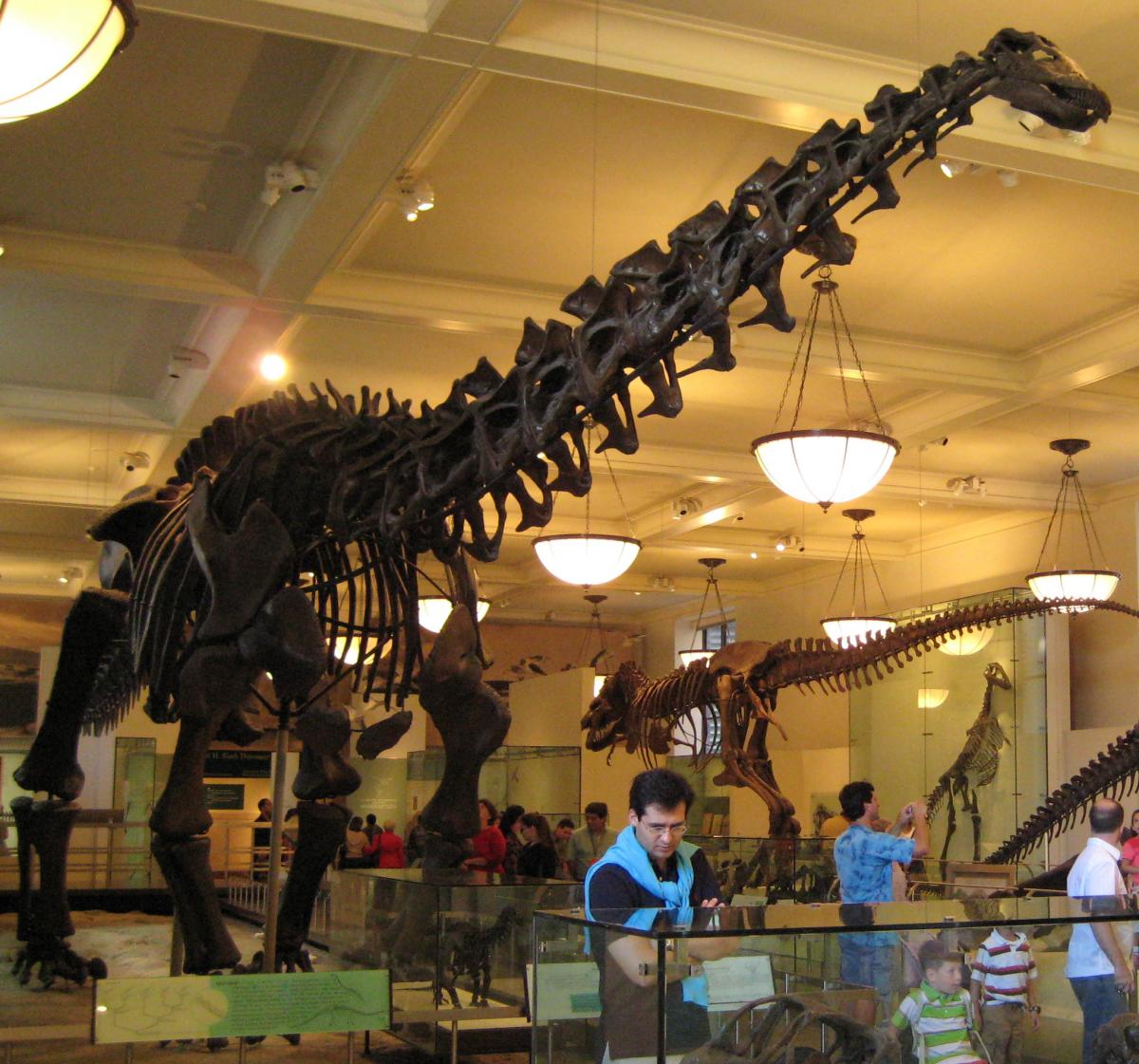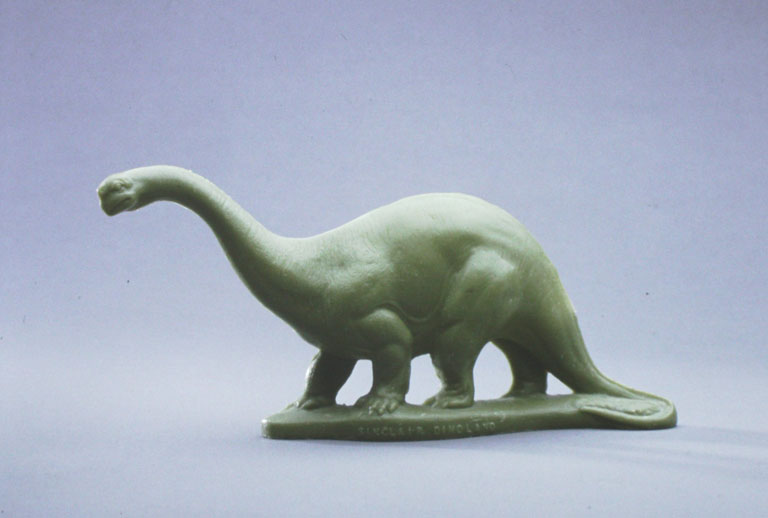In part 1, after explaining how I convinced Stephen Jay Gould to help me play a prank on my brother, I discussed Gould’s reaction, in his essay “Bully for Brontosaurus,” to a rather pointless squabble over a stamp issued by the U.S. Postal Service in 1989. The stamp showed a sauropod identified as Brontosaurus, you see, and paleontologists protested that the correct term was Apatosaurus, since they were two terms for the same genus of dinosaur and Apatosaurus had priority. The postal service’s response was that Brontosaurus was the more familiar term and that only dino-nerds would care. (The word “dino-nerd” might not have been used.) All the while, of course, true dino-nerds should have been more concerned that a stamp in the same series, ostensibly of dinosaurs, showed a Pteranodon, which is no more a dinosaur than I am. Gould, for his point, wisely remarked, “I regret to report, and shall now document, that the issue could hardly be more trivial—for the dispute is only about names, not about things.”
Copy. Paste. That’s how I can sum up my reaction to today’s excitement about a study that supposedly resurrects Brontosaurus as a valid genus distinct from Apatosaurus. There’s such a fondness for Brontosaurus that the study received all sorts of attention,  including a piece by the genus itself—channeled by Alexandra Petri of The Washington Post—complaining, “I can’t believe I had to resort to this Tinkerbell nonsense, getting you all to believe in me and study my bones and clap.”
including a piece by the genus itself—channeled by Alexandra Petri of The Washington Post—complaining, “I can’t believe I had to resort to this Tinkerbell nonsense, getting you all to believe in me and study my bones and clap.”
The study analyzed “all holotypes of putative diplodocid taxa, as well as reasonably complete specimens previously assigned to any diplodocid taxon.” In other words, they looked at any scrap of fossil that is or ever has been assigned to Diplocodidae, a group of closely related sauropods that includes somethingn like fifteen different species.
I think that I have divulged this before, but it bears repeating here. Despite everyone’s impression that we have dozens upon dozens of nearly complete dinosaurs of every species, we actually have very few. The reason you can see a T. rex or an Apatosaurus in most natural history museums isn’t because we have so many that every museum can have one—it’s usually because there is one really good specimen, casts of which have been acquired for display by all of these museums.
Case in point: You know how many individuals this vast study, which scoured the  globe for materials, included? Eighty-one. That’s it. Eighty-one individuals, mostly represented by just a few fragments. This does not mean that the study wasn’t impressive—it was. It scored each of these individuals for 477 anatomical characteristics—that’s a gargantuan undertaking (pun intended) that took the researchers five years to conduct! But with so little to go on, the conclusion—that there is, after all, enough difference among certain Apatosaurus species (mostly when it comes to the relative robustness of their necks) to split them once again into two genera—is tentative at best. No one has yet replicated the analysis, and it’s quite likely that someone else, analyzing the exact same material, would come to a different conclusion. The paleontologist Michael D’Emic, writing for Time, commented, “as admitted by the paper’s authors, the results are far from indisputable, and just a few changes in the data result in the new family tree collapsing into a jumbled bush. The tangle of taxonomy surrounding ‘Brontosaurus’ has only just been rekindled, and there are sure to be more surprises along the way.”
globe for materials, included? Eighty-one. That’s it. Eighty-one individuals, mostly represented by just a few fragments. This does not mean that the study wasn’t impressive—it was. It scored each of these individuals for 477 anatomical characteristics—that’s a gargantuan undertaking (pun intended) that took the researchers five years to conduct! But with so little to go on, the conclusion—that there is, after all, enough difference among certain Apatosaurus species (mostly when it comes to the relative robustness of their necks) to split them once again into two genera—is tentative at best. No one has yet replicated the analysis, and it’s quite likely that someone else, analyzing the exact same material, would come to a different conclusion. The paleontologist Michael D’Emic, writing for Time, commented, “as admitted by the paper’s authors, the results are far from indisputable, and just a few changes in the data result in the new family tree collapsing into a jumbled bush. The tangle of taxonomy surrounding ‘Brontosaurus’ has only just been rekindled, and there are sure to be more surprises along the way.”
But here’s the thing: for anyone not obsessive about the names of these species, it really doesn’t matter. And I say this as a paleontologist. We don’t even really know what a species is in living organisms! With extinct organisms, we usually don’t have the benefit of genetic material, or even complete specimens. We do the best we can. As Gould said, this is about names, not things. This new analysis doesn’t change the number of specimens we have; i t doesn’t change the fact that there were multiple types of these enormous dinosaurs roaming around in the Jurassic; it doesn’t really change anything—except for the exact details of and labels on complicated cladograms that only a scarce few of us will ever take the time to look at, let alone understand.
t doesn’t change the fact that there were multiple types of these enormous dinosaurs roaming around in the Jurassic; it doesn’t really change anything—except for the exact details of and labels on complicated cladograms that only a scarce few of us will ever take the time to look at, let alone understand.
Writing presciently in his 1989 essay, Gould said,
The world of USA Today is a realm of instant fact and no analysis. Hundreds of bits come at us in pieces never lasting more than a few seconds—for the dumb-downers tell us that average Americans can’t assimilate anything more complex or pay attention to anything longer…This oddly “democratic” procedure makes all bits equal—the cat who fell off a roof in Topeka (and lived) gets the same space as the Soviet withdrawal from Afghanistan…We are bombarded with too much in our inordinately complex world; if we cannot sort the trivial from the profound, we are lost in terminal overload. The criteria for sorting must involve context and theory—the larger perspective that a good education provides…If you approach me in wild lament, claiming that our postal service has mocked the deepest truth of paleontology, I will know that you have only skimmed the surface of my field.
Is this new analysis interesting? Sure. Is it more interesting than, say, the fact that melting permafrost might accelerate global change? No. And yet, of the two studies published last week, guess which one got more press coverage.
Missing the forest for the trees yet again.
Are you a teacher and want to tell us about an amazing free resource? Do you have an idea for a future Misconception Monday or other post? See some good or bad examples of science communication lately? Drop me an email or shoot me a tweet <at>keeps3.

